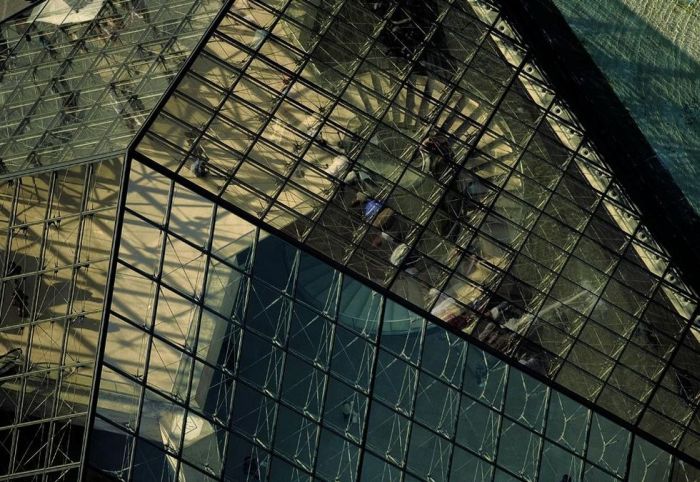Bird's-eye View Of Paris, France
|
The Métro is Paris' most important transportation system. The system, with 300 stations (384 stops) connected by 214 km (133.0 mi) of rails, comprises 16 lines, identified by numbers from 1 to 14, with two minor lines, 3bis and 7bis, so numbered because they used to be branches of their respective original lines, and only later became independent. In October 1998, the new line 14 was inaugurated after a 70-year hiatus in inaugurating fully new métro lines. Because of the short distance between stations on the Métro network, lines were too slow to be extended further into the suburbs, as is the case in most other cities. As such, an additional express network, the RER, has been created since the 1960s to connect more-distant parts of the urban area. The RER consists in the integration of modern city-centre subway and pre-existing suburban rail. Nowadays, the RER network comprises five lines, 257 stops and 587 km (365 mi) of rails.
In addition, Paris is served by a light rail network of four lines, the tramway: Line T1 runs from Saint-Denis to Noisy-le-Sec, line T2 runs from La Défense to Porte de Versailles, line T3 runs from Pont de Garigliano to Porte d'Ivry, line T4 runs from Bondy to Aulnay-sous-Bois. Six new light rail lines are currently in various stages of development.
The new ferry service Voguéo has been inaugurated in June 2008, on the rivers Seine and Marne. Paris is a central hub of the national rail network. The six major railway stations, Gare du Nord, Gare Montparnasse, Gare de l'Est, Gare de Lyon, Gare d'Austerlitz, and Gare Saint-Lazare, are connected to three networks: The TGV serving four High-speed rail lines, the normal speed Corail trains, and the suburban rails (Transilien). Paris is served by two major airports: Orly Airport, which is south of Paris, and the Paris-Charles de Gaulle Airport, near Roissy-en-France, which is one of the busiest in the world and is the hub for the unofficial Flag carrier Air France. A third and much smaller airport, Beauvais Tillé Airport, located in the town of Beauvais, 70 km (43 mi) to the north of the city, is used by charter and low-cost airlines. The fourth airport, Le Bourget nowadays only hosts business jets, air trade shows and the aerospace museum.
The city is also the most important hub of France's motorway network, and is surrounded by three orbital freeways: the Périphérique, which follows the approximate path of 19th-century fortifications around Paris, the A86 motorway in the inner suburbs, and finally the Francilienne motorway in the outer suburbs. Paris has an extensive road network with over 2,000 km (1,243 mi) of highways and motorways. By road, Brussels can be reached in three hours, Frankfurt in six hours and Barcelona in 12 hours. By train, London is now just two hours and 15 minutes away, Brussels can be reached in 1 hour and 22 minutes (up to 26 departures/day), Amsterdam in 3 hours and 18 minutes (up to 10 departures/day), Cologne in 3 hours and 14 minutes (6 departures/day), and Marseille, Bordeaux, and other cities in southern France in three hours.
|
|









